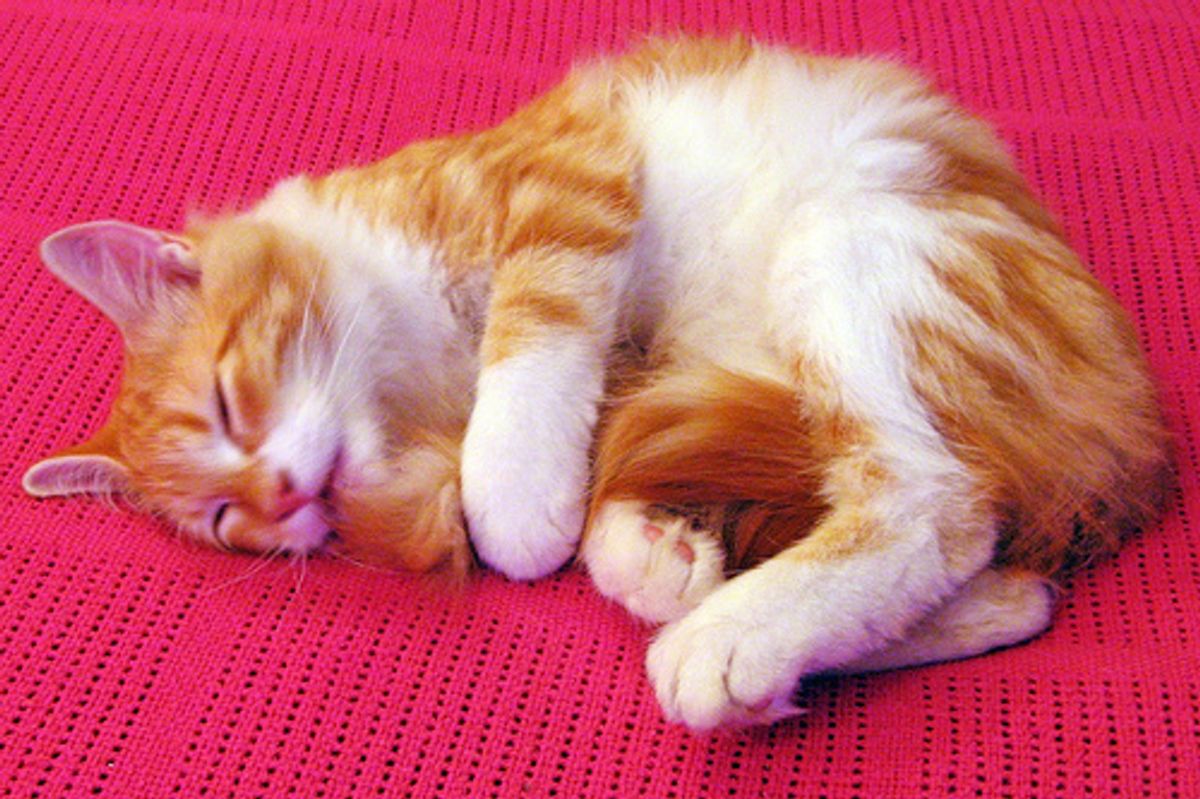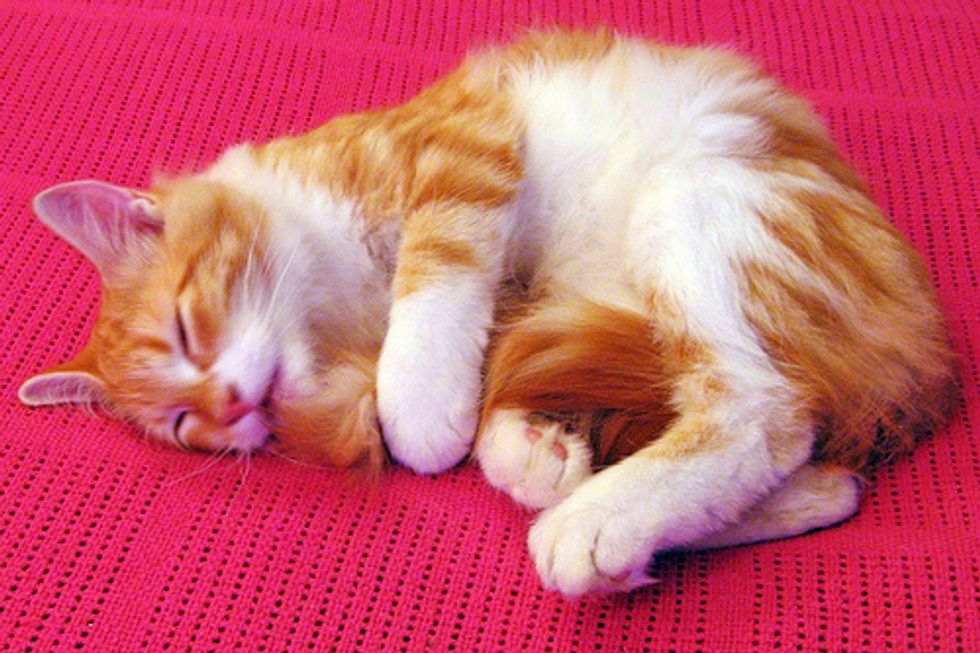Flickr: play4smee
Kittens often have a tail fetish of their own. When they are hyped up, their tail twitching can get them up and turning, doing circles, somersaults, trying everything they can to grab and bite it.
Cats do not usually chase their tail until they are in a certain mood. This behavior is triggered by the same motivation when an excited kitten sees a strip of paper, hair pin or q-tip on the floor, it compels the kitten to arch his back, stand up on his hindquarters to try to appear taller or even raise his hair on his back. The whole reaction comes from cats' natural predator instinct.
(Play the video below to check out Conan, the tuxedo cat chasing his big bushy tail.)
When an extremely excited cat sees his tail moving, he may treat it as prey or find it extremely annoying that he needs to do something about it, thus he goes after it. Of course he is well aware that it is part of his body. That's why when cats finally wrestle down their own tail, they will start licking and grooming it.
Cats make a lot of cute and silly antics. Chasing their own tail is definitely one of them. However, there are a few cases where chasing their own tail could be a medical cause if the cat detects discomfort or irritation from their tail. In those cases, it is better to fully examine their tail and make sure everything is OK.


